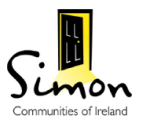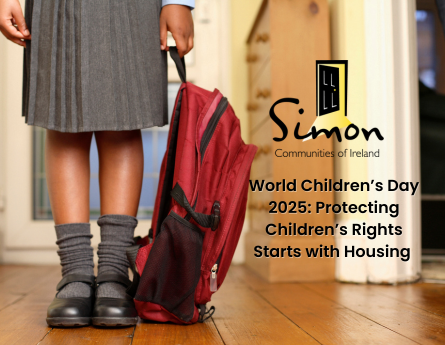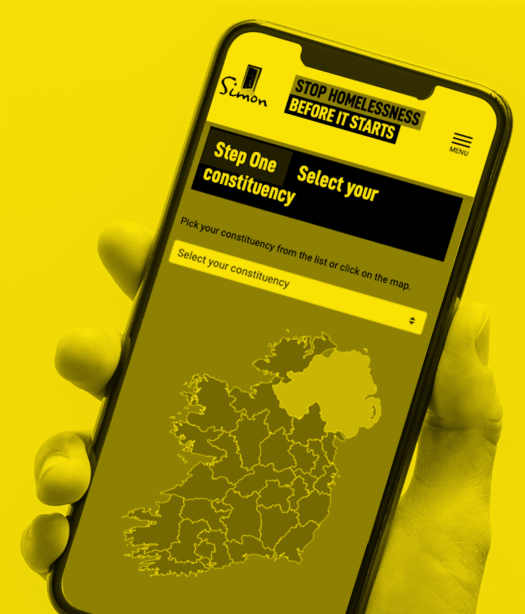Author: Anna Marie Bourke
The Role of HAP in Homeless Prevention
In this month’s blog, we look at the role of the Housing Assistance Payment (HAP) in the homeless sector, giving a brief insight into why the Simon Communities are campaigning for a revitalization of HAP rates given the current economic and housing context.
In this blog we discuss:
- HAP and its role in tackling homelessness
- Issues facing HAP recipients
- Policy changes needed to strengthen HAP
Introduction to HAP and its role in tackling homelessness
HAP is a social housing support provided by all local authorities in Ireland and is available to any household that qualifies for social housing support. Each Local Authority has unique standard HAP rates and a discretionary rate that provides additional financial support to households in need.[1] In Dublin, the discretionary rate is set at up to a maximum of an additional 50% of the standard rate. For example, the rate for a single person in Dublin City (€660) is increased to €990. In all local authority areas outside of Dublin, the discretionary rate is a maximum of an additional 20% of the standard rate.
HAP is an excellent homeless prevention measure and housing financial support that is helping people exit homelessness. According to the latest quarterly Homeless Progress Report from the Department of Housing, HAP was the main exit from homelessness in 2021, with an average of 69% of homeless exits each quarter occurring due to HAP tenancies in the private market.[2] Along with this, a study from the Central Statistics Office (CSO) shows that one fifth (21.1%) of all HAP Households in 2019 were referred from homeless accommodation.[3]
Issues facing households that qualify for HAP
Low income households facing into today’s housing market are at an increased risk of homelessness as HAP is no longer sufficient to meet their housing need.
Last week we launched our Locked Out of the Market quarterly research report.[4] The report found an all-time low number of properties affordable under HAP, with only 80 properties available within HAP limits. This represented a 46% decrease from the 148 properties available in the December 2021 study and a drastic 92% less than the 906 available in June 2021.
Click here to Read Locked Out of the Market, March 2022
Similar trends are seen elsewhere. The Department of Housing noted 1,004 exits from homelessness through HAP in Q1 2021 falling 28% to 721 in Q4.[5] This is tremendously concerning – but not surprising – given the current economic and housing crisis.
HAP rates have remained stagnant since 2016 when the average national rent stood at €1,111 according figures from Daft.ie[6]. Since then, the average monthly rent has risen nearly 40% to €1,524[7]; the highest national standardized average rent seen by the study to date.
The upsurge in prices is combined with a chronic lack of supply. As of February 1st, Daft.ie reported just 1,397 homes listed to rent nationwide, down 63% on the same date a year previously, and lowest rental stock figure seen since 2006.
Along with this, Ireland is facing into extreme inflation rates and a rising cost of living. The most recent Consumer Price Index[8] from the Central Statistics Office (CSO) showed that Ireland’s cost of living increased by 6.7% in the last year; the highest growth in price seen in the Irish economy since November 2000. The most notable changes in the year were increases in transport (+18.7%), followed by housing, water, electricity and gas (+17.4%).
HAP rates need to be re-evaluated in light of inflation and rising costs of living. Our latest #SimonTalks webinar looked at trends in the rental sector, with insights informed by data collected and research undertaken by the Residential Tenancy Board (RTB). The research found that 66% of those in receipt of rental assistance indicated that they paid a top-up to their landlord. Low-income households utilising HAP are being forced into accommodation that they cannot afford which is increasing their risk of tenancy breakdown and homelessness.
The most vulnerable in our society are being forced to bear the brunt of this inflation and housing crisis and it needs to stop.
What can be done to ensure HAP continues to support those in homelessness?
Increase the standard HAP rates: The Department of Housing is currently conducting a review of HAP internally. Part of across all local authority areas in line with inflation and cost of living. This needs to be re-assessed regularly to ensure it remains an effective homeless prevention measure.
Increase the Discretionary HAP rate in all Local Authorities to 50%. During data collection for our Locked Out study, we noted the properties that could be available to rent if the discretionary rate was increased to 50% in all Local Authorities. This led to an additional 35 properties available across the four household types. This is significant given most areas outside Dublin had no properties available whatsoever under current standard or discretionary HAP rates.
More Social Housing: In the long-term, we simply need to build more social housing. Once the State have built up a sufficient social and affordable housing stock, there will be less of a reliance on HAP to meet housing needs.
Enact the Simon Bill: The Minister for Housing has committed to enacting the Simon Bill which will provide increased protection for those facing eviction and deemed to be at risk of homelessness. We need to see this enacted into legislation now.
Let’s stay in touch
If you would like to stay in touch, you can subscribe to our mailing list at the bottom of this webpage.
In case you missed it, you can re-watch our #SimonTalks insights into the rental sector with the Brian Gallwey and Caren Gallagher here:
[1] The discretionary rate is sometimes referred to as ‘Homeless HAP’ or HHAP. More information on HAP can be found here: http://hap.ie/
[2] https://www.gov.ie/en/publication/c83d9-homeless-quarterly-progress-report-for-q4-2021/
[3] https://www.cso.ie/en/releasesandpublications/ep/p-hhwl/socialhousinginireland2019-analysisofhousingassistancepaymenthapscheme/householdscomingintohap/
[4] Locked Out of the Market considers the availability of properties within both the standard and discretionary HAP limits in 16 areas around the country for four household categories: single person, couple, couple/one parent and one child and couple/one parent and two children.
[5] https://www.gov.ie/en/press-release/5b441-monthly-homeless-report-for-december-2022-and-homeless-quarterly-progress-report-for-quarter-4-2021/
[6] https://ww1.daft.ie/report/2016-q4-rental-daft-report.pdf?d_rd=1
[7] https://ww1.daft.ie/report/2021-Q4-rental-daftreport.pdf?d_rd=1
[8] https://www.cso.ie/en/releasesandpublications/er/cpi/consumerpriceindexmarch2022/


